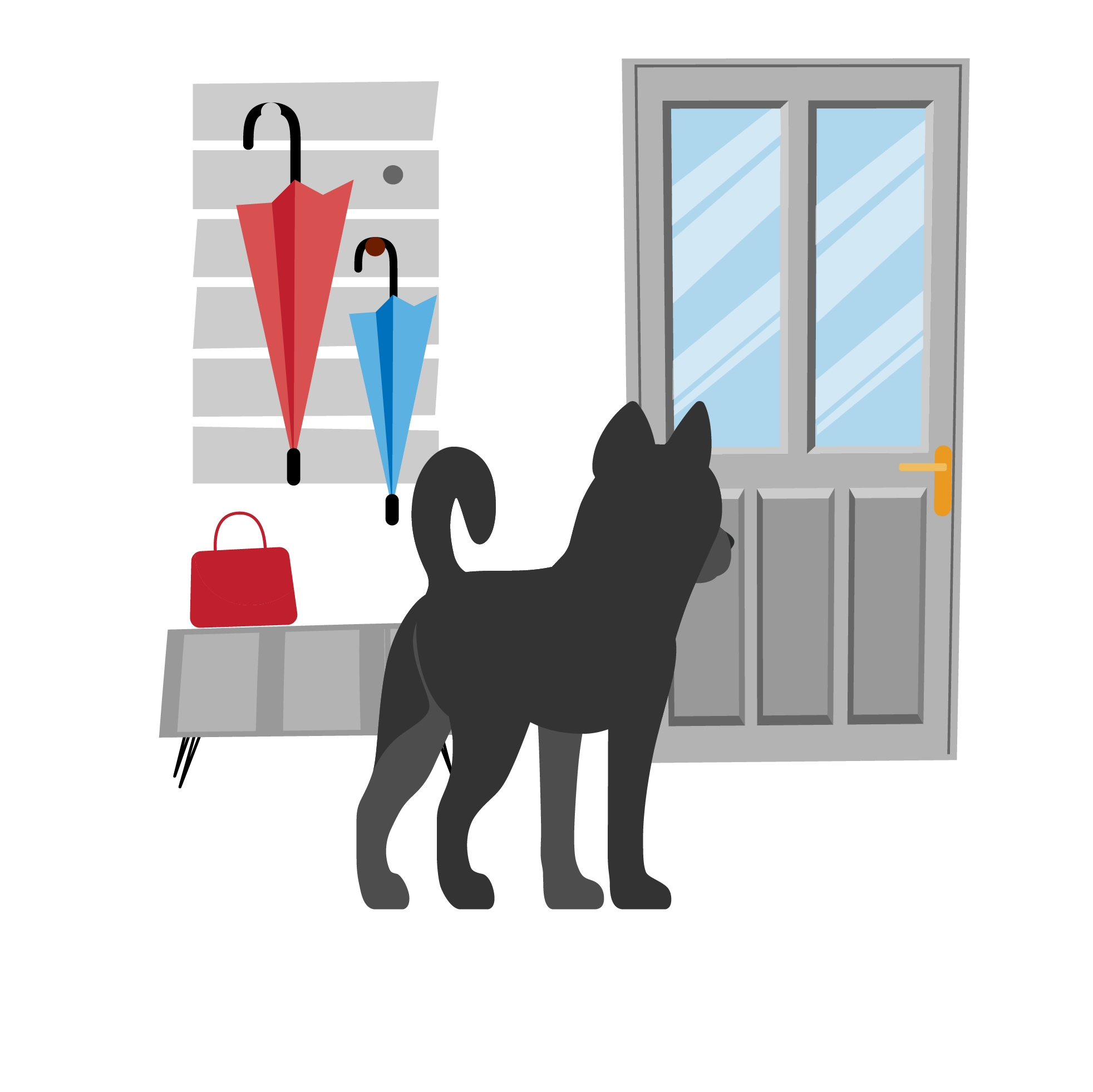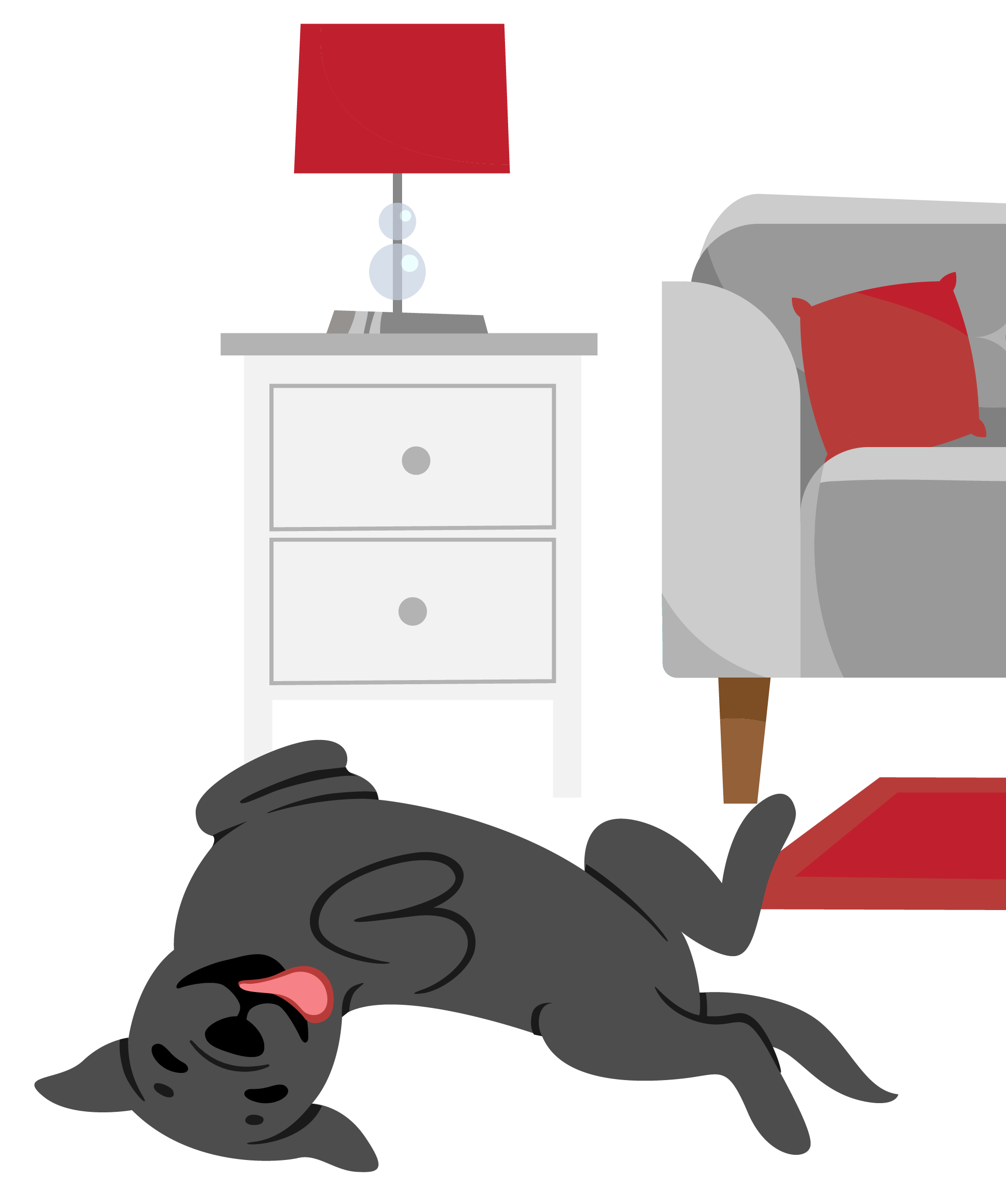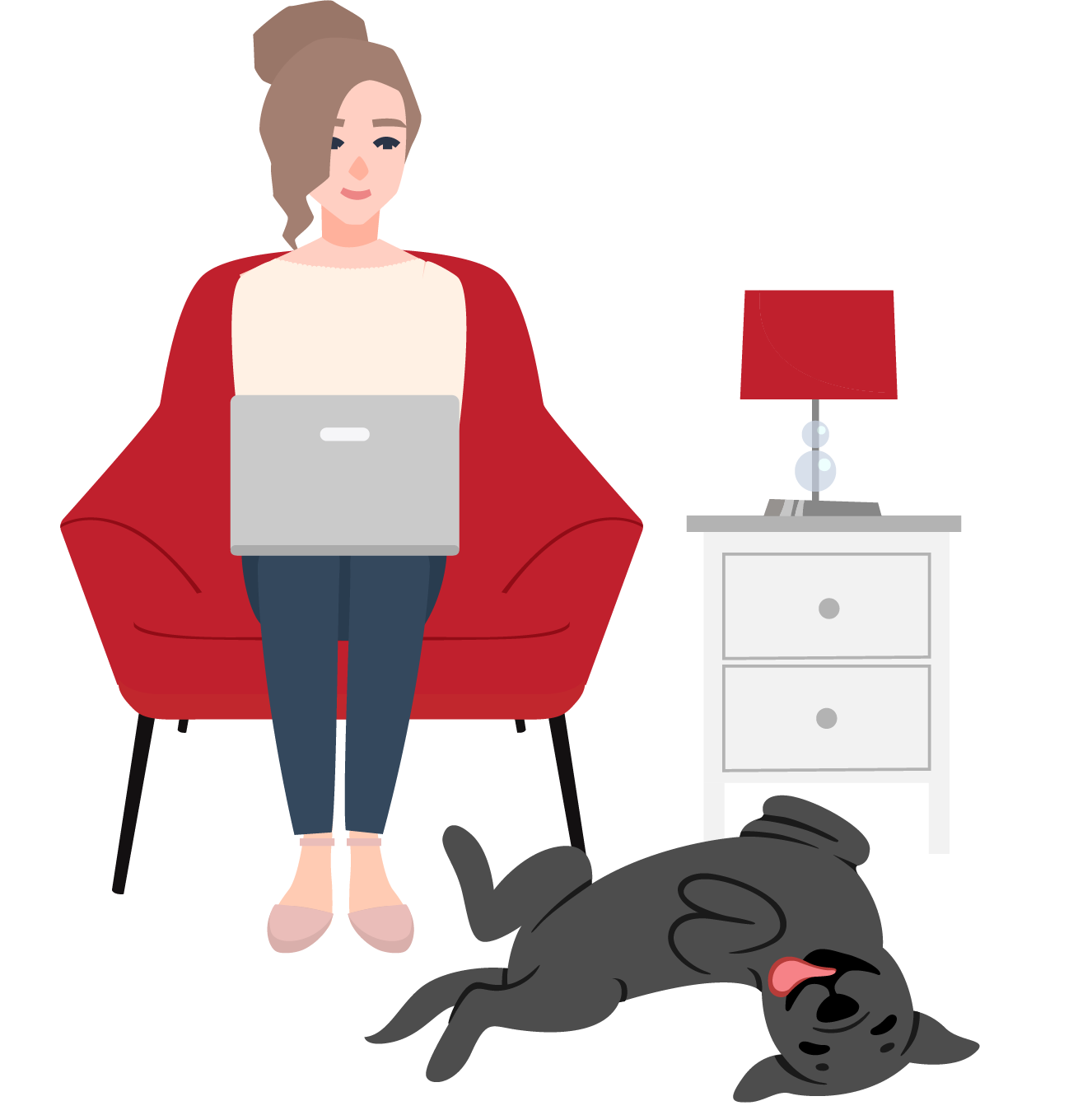Separation Anxiety
Destruction of home – rugs, furniture, doors/windows, molding around exit points
Potty accidents, when your dog is normally housebroken
Constant howling, barking or crying, often resulting in neighbors complaining
Self-injury, often from chewing or digging
Refusal to eat
Pacing, drooling and/or inability to settle

And then there’s your distress…
Do you worry about your dog every time you need to leave? Not to mention the financial stress of replacing rugs, furniture or doors frames? And most importantly, the heartbreak and despair when you return seeing the damage and your clearly distraught dog?

THERE IS A BETTER WAY.
Separation anxiety training can give you:
A happier dog who can relax during absences
Relief from guilt over leaving your dog
Peace of mind and freedom
Relief from stress and worry
No more complaining from neighbors
Convenient training on your schedule
There is hope and I can help rescue you. Separation anxiety training isn’t a quick fix but it is a simple, scientifically proven process and with proper training, this disorder can be resolved or greatly improved. I can help you and your dog’s quality of life, strengthening your relationship and bringing relief to both of you.
Don’t you both deserve that?
My effective training solutions help your dog learn to relax during absences so you can leave without worry or guilt.

Are you ready to regain your life?
Let’s get started.

1:1 Initial Video Assessment
$175

DIY Online Course
$57
What if I need more help?
The Training Process
Separation anxiety training success is achieved through a personalized, proven systematic training protocol, which means your dog learns how to be safe during absences by breaking those absences up into tiny, manageable pieces your dog can handle. And then we very slowly make those pieces bigger and bigger, always ensuring your dog is safe and never pushed too far. This means you must be able to suspend all absences while we’re working through this process. Think of it as making an unbreakable promise to your dog that you will suspend absences to help them feeling safe. And just like with any promise, very few relationships recover from a broken promise. Dogs are no different. So even if you think you can leave him just “this one time” that’s a breach of trust. And that single breach of trust can cause setbacks. During training, the only time the dog is left alone is during our practice sessions.
Keys to Success:
Suspending Absences
Technology
Commitment
Humane Training
FAQs
What is Separation Anxiety?
Separation anxiety is a panic disorder or phobia, similar to when humans have a panic attack. It is not something that will naturally resolve on its own. To help a dog with separation anxiety, we need to do systematic training often coupled with medication from a vet to help get the dog’s anxiety to a manageable level in the dog’s brain chemistry, like someone with depression who takes medication to help them. Medication options should be discussed with your vet or I can make a referral for you to a specialist, if needed.
How long does it take to fix?
Just like a psychiatrist would be unable to predict a timeline to cure someone’s depression, there’s no way to predict a timeline for your dog’s separation anxiety. Every dog is an individual and there’s many factors that go into each individual case, including your ability to complete the training and suspend absences. The rate of progress is completely determined by your dog and can be slow, particularly at the beginning, but often accelerates as training progresses. I encourage you to think in terms of months, not weeks or days when committing to working on this with your dog.
What's the cost?
After your initial assessment and consult are done, 4-week packages are and renewed as long as needed to accomplish the duration you’re looking to achieve. I require a 4-week minimum commitment as this is minimum amount of time to allow me to learn about your dog, their body language, progress for you to learn how protocol works. Once you’ve done at least 2 months of training, you may be eligible for for one of my step-down packages, depending on how your dog is progressing.
Is my dog just angry, stubborn or being spiteful?
Absolutely not. While it can be easy to think this, the reality is, your dog is afraid of being left alone. And, dogs don’t have the same depth of emotions as humans to experience things like guilt, revenge, resentment or anger. It’s just not how they’re wired. This isn’t a choice he’s making.
Do I need any special equipment?
Separation Anxiety is most effective when done remotely, within your own home, with the use of easy to use video technology. You can use anything from your laptop, smartphone, tablet or an inexpensive, standalone Wifi camera. Don’t worry! It’s all really easy and you don’t have a to be a tech wizard to use it!
Why do it remotely?
Well, because your dog needs to be truly alone. If I were to show up to watch your dog being alone, he would know I was there and he wouldn’t be truly alone. Video allows us to monitor the dog in a real-life absence.
Should I use a crate?
Possibly, but not likely. Very often strict confinement can make separation anxiety worse and, in some cases, the dog could injure themselves if confined – biting the bars, pinching paws or digging furiously, breaking nails. For some dogs we do use a larger confinement space like a room with a baby gate during their alone-time but many dogs do much better when they’re not confined at all.
© 2024 Rescued By Training LLC. All rights reserved.
Site Design by Kelly Duggan
Photographs by Yeah, She Snaps!
